Qué vas a encontrar en este artículo
Las emociones básicas o primarias aparecen durante el desarrollo natural de cualquier persona, con independencia del contexto en el que se desarrolle, y tienen como propósito ayudarnos a sobrevivir, dirigir nuestra conducta y favorecer la relación de los unos con los otros.
Las emociones básicas nos sirven para defendernos o alejarnos de estímulos nocivos (enemigos, peligros…) o aproximarnos a estímulos placenteros o recompensas (agua, comida, actividad sexual, juego…) y tienen como función mantener la supervivencia, tanto personal como de la especie.
“Las emociones discretas (básicas) son las emociones que no pueden dividirse en otras”
Niedenthal, Krauth-Gruber y Ric (2006)
emociones básicas del ser humano
Las principales características de las emociones básicas en el ser humano, son:
Representamos aquí las expresiones de las emociones básicas y además hemos incluído el amor y la vergüenza al considerarlas emociones muy presentes en la infancia.
Esta clasificación de las emociones básicas es la más extendida y aceptada. Fué concebida por Paul Ekman (1979) psicólogo, investigador y profesor, que fué pionero en el estudio de las emociones y su expresión facial. Identificó 6 emociones básicas y prácticamente universales en todas las culturas. Según sus estudios éstas son: Miedo, tristeza, ira, alegría, sorpresa y asco.
Para Daniel Goleman (1995) psicólogo, periodista, escritor y divulgador científico, famoso por su libro “Inteligencia Emocional”, también son 6 las emociones básicas: Miedo, tristeza, ira, felicidad, sorpresa y aversión.
Según un estudio reciente llevado a cabo en la Universidad de Glasgow del Reino Unido, y teniendo en cuenta las reacciones de los distintos músculos faciales que producen las emociones, concluyen que son 4 emociones básicas: Miedo, tristeza, ira y felicidad. Consideran que el miedo y la sorpresa comparten la misma señal base (ojos totalmente abiertos) y también el asco y la ira (nariz arrugada).
Consideran que el miedo y la sorpresa comparten la misma señal base (ojos totalmente abiertos) y también el asco y la ira (nariz arrugada).
Esta clasificación de las emociones básicas responde a la decisión de los guionistas de la película de Pixar «Del Revés» (Inside Out) que eligieron solo cinco emociones para representar debido a las limitaciones del guión. Decidieron que las 5 emociones básicas son: Miedo, tristeza, ira, alegría y asco, teniendo en consideración que éstas se pueden encontrar e identificar en todas las culturas del mundo.
Paul Ekman, en la década de 1990, considerando que las emociones son universales y que tienen un origen biológico, amplió su anterior clasificación a 7 emociones básicas: Miedo, tristeza, ira, felicidad, sorpresa, asco y desprecio. Incluyendo el desprecio al considerar que esta emoción y su expresión son reconocidas universalmente.
 2.5.- Emociones básicas de Plutchik (rueda de 8 emociones básicas y 8 avanzadas)
2.5.- Emociones básicas de Plutchik (rueda de 8 emociones básicas y 8 avanzadas)
Robert Plutchik (1980) psicólogo y profesor, creó la Rueda de las Emociones donde se muestra la interrelación de las emociones humanas, con 8 emociones básicas: Miedo, tristeza, ira, alegría, sorpresa, confianza, desagrado y anticipación y 8 emociones avanzadas que se obtienen a partir de las primeras: Amor, desprecio, optimismo, sumisión, susto, decepción, remordimiento y alevosía.
La Rueda de las Emociones Básicas de Plutchik (1980) representa 8 emociones básicas y 2 intensidades de cada una de ellas y 8 emociones avanzadas, formadas por la conjunción de 2 emociones básicas.
Roberto Aguado (2005) incluye a la lista de las 6 emociones básicas otras cuatro para completar su denominado universo emocional básico atendiendo a los procesos bioquímicos. Así este queda formado por: Miedo, tristeza, ira, alegría, sorpresa, asco, culpa, admiración, curiosidad y seguridad.
Así este queda formado por: Miedo, tristeza, ira, alegría, sorpresa, asco, culpa, admiración, curiosidad y seguridad.
Las emociones básicas o primarias tienen una reconocible función adaptativa que implica la inclinación hacia una determinada conducta, es decir, existe una función motivacional de las emociones:
Como hemos visto, las emociones tienen como función original mantener la supervivencia. Pero lo que debemos tener en cuenta es que, hoy en día, nuestra supervivencia está generalmente garantizada y por tanto, las emociones, nos informan de peligros que pueden no ser reales o evidentes y debemos revisar si nos están ayudando o no en nuestra situación actual.
Pero lo que debemos tener en cuenta es que, hoy en día, nuestra supervivencia está generalmente garantizada y por tanto, las emociones, nos informan de peligros que pueden no ser reales o evidentes y debemos revisar si nos están ayudando o no en nuestra situación actual.
Cuando las emociones básicas se combinan para producir otras emociones más complejas, se producen las denominadas emociones secundarias, complejas o derivadas, pues se derivan de las primarias. Por ejemplo, la vergüenza es una mezcla de culpa y miedo.
Las emociones secundarias no presentan rasgos faciales característicos, ni una tendencia particular a la acción, por lo que pueden pasar desapercibidas o ser disimuladas (por ejemplo, los celos).
En muchas emociones secundarias encontramos funciones adaptativas reconocibles:
 2.- Clasificaciones de las emociones complejas
2.- Clasificaciones de las emociones complejas
sociales
Son características de las personas, no se dan en los animales. Los grupos sociales tienen principios, normas, reglas, hábitos, códigos de conducta, de etiqueta, etc., que no son necesariamente morales. Las emociones sociales son emociones complejas que se aprenden y que varían en función de las costumbres, normas y creencias sociales de una determinada cultura.
El lenguaje de las emociones tiene una gran carga social, de forma que cada cultura condiciona el significado y el lenguaje expresivo de estas emociones. Entre las emociones sociales podemos destacar el orgullo, la humillación, el desprecio y el arrepentimiento.
Cartas de la familia del orgullo perteneciente al juego EMOCIÓN! amplía tu vocabulario emocional
morales
Las normas morales son aquellas basadas en principios válidos para todos los seres humanos, mientras que las sociales son específicas de ciertos grupos. Las normas morales persiguen el bienestar de todos los seres humanos, la satisfacción de sus necesidades básicas y el respeto a sus derechos fundamentales. Las reglas o principios morales están basados en el respeto mutuo y en evitar el daño, el sufrimiento y la injusticia.
Las normas morales persiguen el bienestar de todos los seres humanos, la satisfacción de sus necesidades básicas y el respeto a sus derechos fundamentales. Las reglas o principios morales están basados en el respeto mutuo y en evitar el daño, el sufrimiento y la injusticia.
Por tanto, las emociones morales surgen de la percepción del quebrantamiento o no de estos principios universales. Las más importantes son la culpa, la vergüenza, la indignación y el remordimiento.
estéticas
Son la respuesta emocional ante la belleza y tienen muchas aplicaciones educativas: historia del arte, expresión artística, música, literatura… Conviene aprender a saborear las emociones estéticas para construir bienestar. El arte en todas sus expresiones tiene por objetivo activar las emociones estéticas. Entre ellas encontramos el arrobo, el embeleso, la admiración, el enamoramiento.
 1.- Lazarus (1991)
1.- Lazarus (1991)
Incluye la compasión y la esperanza en el grupo de las emociones ambiguas (aunque en nuestra cultura las consideramos emociones positivas)
Clasifica las emociones desde una perspectiva psicopedagógica, pensada para ser utilizada en la educación emocional.
Agrupa a las emociones en 5 familias:
 3.- Familia de emociones
3.- Familia de emociones
Las emociones se pueden agrupar en familias y cada familia de emociones contiene una colección de matices dentro de la misma especificidad emocional (el miedo incluye temor, pavor, terror…, la aversión incluye el asco, el rechazo, la repugnancia… ).
Algunas emociones pueden clasificarse en diversas familias, como la frustración, que puede encontrarse en la familia de la ira o de la tristeza, o el susto, que puede incluirse en la familia de la sorpresa o del miedo.
Aquí te dejamos nuestra particular clasificación de las emociones, de carácter didáctico, en la que prima la comprensión de las diferentes intensidades dentro de cada familia de emociones frente a otros criterios. Si quieres, puedes descargar este listado de definiciones de 60 emociones agrupadas en 12 familias, suscribiéndote a nuestra página.
Descarga GRATIS las definiciones de las emociones
Valoración del Usuario: 5 / 5
Desde que nuestros hijos vienen al mundo nos esforzamos en que cada vez “aprendan más cosas y antes”: las letras, los colores, los números, idiomas, informática…. conocimientos e información que, si bien son necesarios, resultan insuficientes para un desarrollo sano de su persona si no nos ocupamos, en la misma medida, de enseñarles a relacionarse con los demás, conocerse a sí mismos, a afrontar las diferentes situaciones que les traerá la vida y a regular su comportamiento y emociones.
Las emociones son estados internos caracterizados por pensamientos, sensaciones, reacciones fisiológicas y conductas que son subjetivos. Son universales, propias del ser humano y sirven, entre otras cosas, para comunicarnos con los demás.
Hay emociones que se las llama positivas, porque están asociadas con el bienestar y otras negativas que se acompañan de malestar, pero todas ellas son válidas y necesarias. No podemos evitarlas, pero sí aprender a manejarlas, ya que tienen una gran influencia en nuestra conducta y nuestro pensamiento.
No podemos evitarlas, pero sí aprender a manejarlas, ya que tienen una gran influencia en nuestra conducta y nuestro pensamiento.
Lo primero para regular las emociones con eficacia es conocerlas. Os presento a las 6 emociones básicas:
• Alegría
Sentimiento placentero ante una persona, deseo o cosa. Nos impulsa a la acción. Son múltiples los ejemplos de alegría en los niños, desde merendar sus galletas preferidas, hasta ver los regalos la mañana de Reyes Magos.
• Tristeza
Sentimiento de pena asociado a una pérdida real o imaginada. Nos hace pedir ayuda. Situaciones en las que los niños pierden alguno de sus juguetes preferidos o se enferman sus mascotas, son momentos de tristeza para ellos.
• Miedo
Inseguridad anticipada ante un peligro, real o imaginario. Nos ayuda a la supervivencia ya que nos hace actuar con precaución. El encuentro con algunos animales o con personas desconocidas pueden ser ejemplos de situaciones de temor en los menores.
• Ira
Rabia cuando las cosas no salen como queremos. Nos impulsa a hacer algo para resolver un problema. Son multitud los momentos de enfado de un niño: cuando los mandamos a dormir, cuando tienen que recoger, cuando apagamos la TV…
• Asco
Desagrado respecto a algo o alguien. Nos hace alejarnos. La situación más típica en los más pequeños se produce ante determinados alimentos que, al provocarles asco, rechazan de forma tajante.
• Sorpresa
Asombro, desconcierto. Nos ayuda a comprender algo nuevo, porque nos hace buscar respuestas ante lo desconocido. Favorece la atención, la exploración y el interés o la curiosidad.
El conjunto de habilidades que sirven para expresar y manejar las emociones y sentimientos de la manera más adecuada es lo que podríamos llamar inteligencia emocional; es la capacidad de tomar conciencia de la propias emociones, conocer las de los demás y aprender a regularlas. Conciencia y regulación emocional son competencias emocionales básicas para afrontar los retos de la vida y constituyen un factor protector ante conductas de riesgo como el consumo de drogas o la violencia.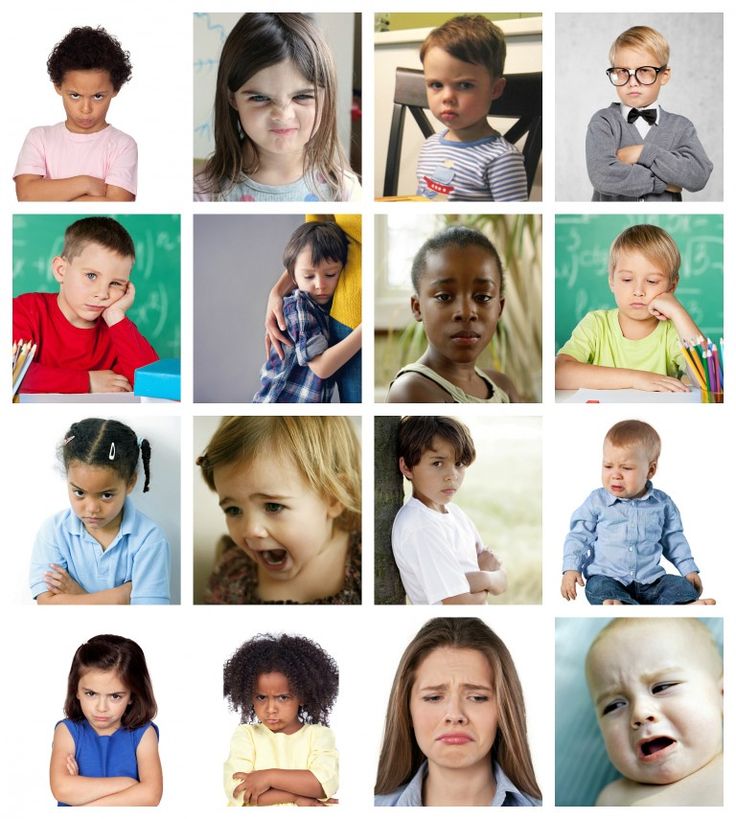
Dichas habilidades pueden ser desarrolladas por medio del aprendizaje y la experiencia cotidiana. Os propongo que, en los próximos días, intentéis ser más conscientes de vuestras emociones y de identificar con qué situaciones están relacionadas.
Haced lo mismo con vuestros hijos, poned nombre a lo que están sintiendo en un momento dado para que vayan aprendiendo a identificar sus propias emociones y, después, podrán poner en marcha estrategias para regularlas.
¿Y vosotros, cómo le explicáis a vuestros hijos las emociones?
Aquí te dejamos ideas para enseñar a regular las emociones.
Alma Martínez de Salazar. Especialista en Psicología Clínica
Image by Pete Linforth from Pixabay
 ” Let this information not protect against shells, but only at first. Understanding the nature of your feelings helps a person regulate them, even if he is only four years old. We have compiled a list of difficult childhood emotions and tell parents what to do with them.
” Let this information not protect against shells, but only at first. Understanding the nature of your feelings helps a person regulate them, even if he is only four years old. We have compiled a list of difficult childhood emotions and tell parents what to do with them.
Psychologists and physiologists do not yet have a single and universally accepted system for classifying our feelings. In the meantime, scientists are arguing, we can safely use their old developments and well-known concepts.
The most popular of them divides emotions into two types: basic and complex. The founder of the classification is the American psychologist Paul Ekman. In 1972, he identified five basic emotions: anger, disgust, fear, happiness, sadness. Early 90’s, he added a sixth to them – surprise. Then, however, he undertook to expand this list, but it is more convenient to start from these six positions.
Why exactly these emotions are basic? It is believed that they are not socially determined, they are embedded in us as a species. In almost any culture, you recognize them by their characteristic facial expression (twisted upper lip, wrinkled bridge of the nose – it’s understandable that a person is showing disgust). Complex emotions are obtained from basic ones, but they no longer arise automatically, but include some kind of cognitive processing. They require reflection, self-assessment, and can take into account both the grandmother’s opinion and the general cultural situation.
In almost any culture, you recognize them by their characteristic facial expression (twisted upper lip, wrinkled bridge of the nose – it’s understandable that a person is showing disgust). Complex emotions are obtained from basic ones, but they no longer arise automatically, but include some kind of cognitive processing. They require reflection, self-assessment, and can take into account both the grandmother’s opinion and the general cultural situation.
It is logical to assume that complex emotions are a spectrum of adult experiences. Well, what kind of social analysis can there be at kindergarten age? However, no – children very early develop the ability to feel a complex set of feelings. This was established by researchers from Brigham Young University. It turned out that already two-year-old children demonstrate, for example, pride, and starting from four, according to the researchers, it is already possible to discuss other complex emotions with the child: he will know exactly what you are talking about.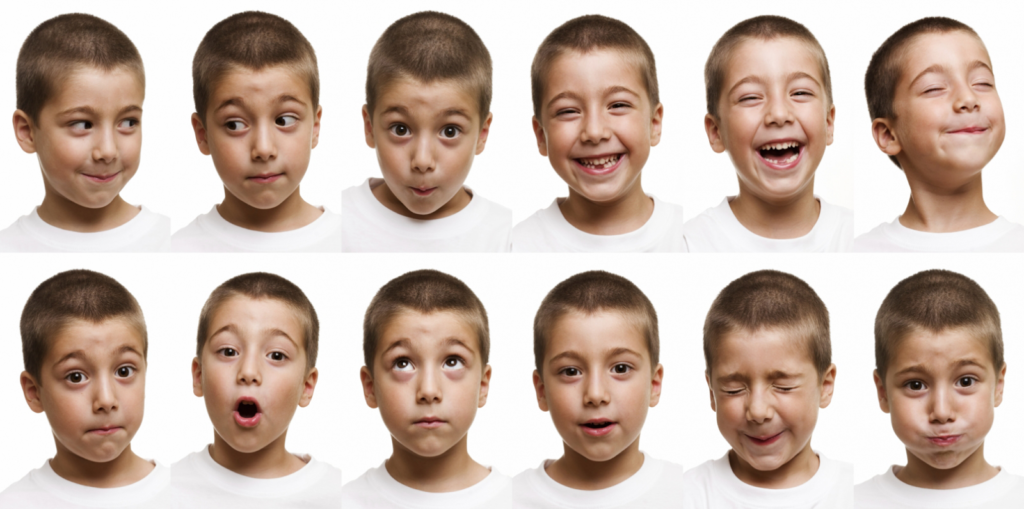
Usually, parents discover pride, shyness, and other interesting experiences in their children much earlier than researchers — however, it is not customary to link to parental diaries. But it is well documented that from the age of 5-11, children successfully understand that emotions are amenable to regulation.
However, do not forget that the ability to control affects gives the prefrontal cortex. It is she who helps to direct attention, connect knowledge about the world and thereby improve one’s behavior. The bark will reach maturity after you celebrate your child’s 20th birthday. That is, children simply do not have enough tools to effectively resolve the situation with the throwing of bombs.
This means that if we are patient enough, then after 15-20 years our mournful work will not be lost. It makes sense to talk and discuss emotions with children, but be sure to make allowances for the immature cortex.
In order for emotional development to go like clockwork, the child needs:

Once in an awkward situation, the child, thanks to childish egocentrism, sees his mistake as if he had been placed on all the front pages of newspapers. A parent can help put the experience in perspective. Ask him how he feels when others forget a line from a poem at a concert. Tell about a similar incident from your life, but with caution: the child should not feel like you are setting yourself up as an example of a story about how you got out great after losing your office keys.
It is important here not to give the child the impression that his feelings are not serious enough: for him this is a real problem. But it would also be strange to go too far, so do not dramatize. The best thing to do is to praise the child for how he copes with this. “It really is very upsetting to forget the formula right at the blackboard. But I liked how you handled it: you came up with your own. It is brave to continue to act under Maryivanna’s gaze.”
It is formed when a person feels some injustice against himself and at the same time experiences anger. The child may be offended by the fact that he is insidiously persuaded to eat vegetables, given the wrong hat, or not invited to the party to which his sister was invited. Horrible, dishonest world!
The child may be offended by the fact that he is insidiously persuaded to eat vegetables, given the wrong hat, or not invited to the party to which his sister was invited. Horrible, dishonest world!
Discussing something with an offended person is not easy. He usually slams the door and refuses to negotiate. But if you do manage to have a conversation, start the standard way: acknowledge the person’s feelings. He has the right to such emotions, and green vegetables on a plate are really unpleasant.
When the child has recovered from cursing the oppressor, ask how pleasant it is to depend on the behavior of others
After all, an offended person seems to give the remote control of his feelings to others. So-so situation. Resentment makes us hide and do nothing: everything is unfair, I hate everyone. Ask how the situation could be improved, what can be done so that everything depends on the child himself.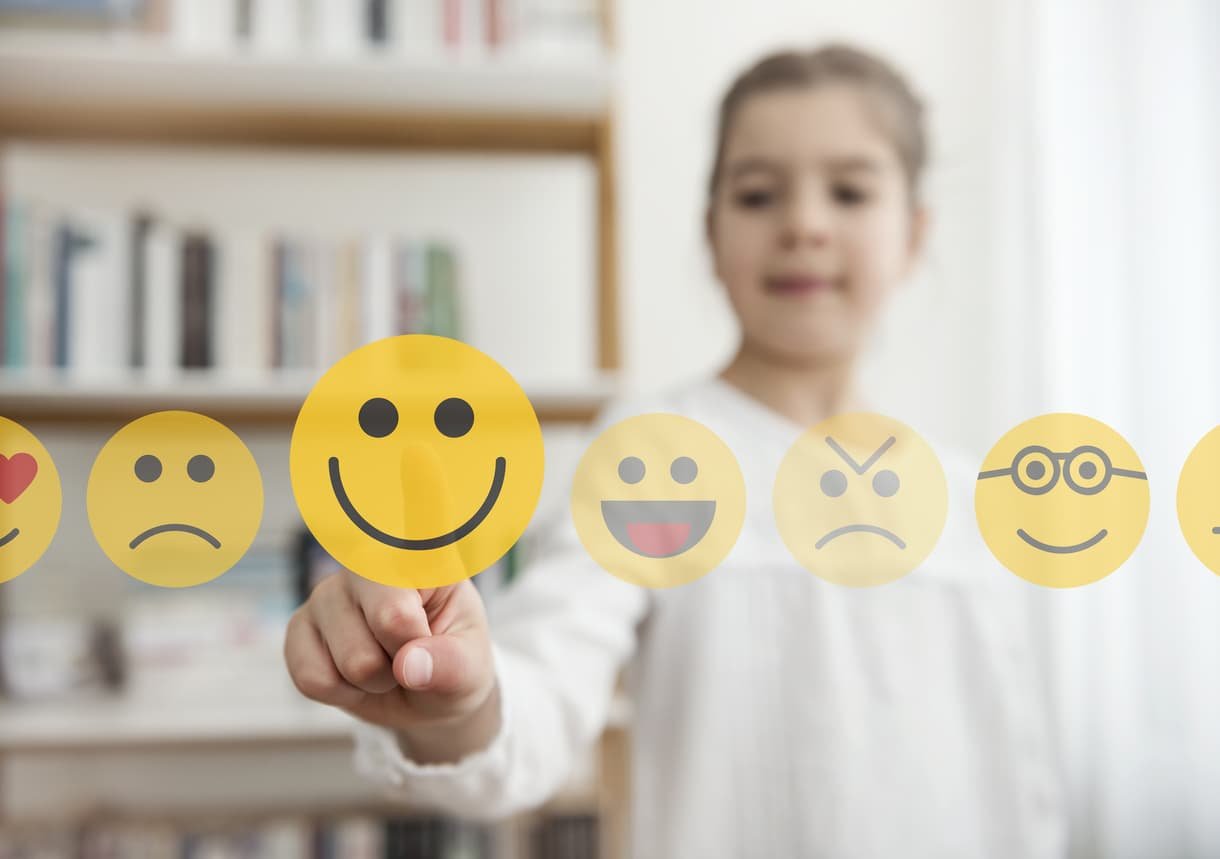 If a person begins to think in a rational way, we can assume that you are on the right track.
If a person begins to think in a rational way, we can assume that you are on the right track.
Falling into a puddle of ice cream and losing the game “Fun Starts” are serious blows of fate. Psychologists believe that parental attitudes towards disappointment affect how a child perceives inevitable setbacks. If we begin to grieve and lose hope along with the child, we place a double burden on the child’s shoulders. Mixed with our own bitterness is the realization that they let us down.
A good way is to view childhood disappointments as a rewarding experience that prepares them for adulthood (and reunion).
It is important not to try to save the child from disappointments, not to cover up all the sharp corners, but to help them survive
So, if the little son came with his head down (or, conversely, in hysterics), be sure to sympathize and acknowledge the feelings. When the passions subside, you can discuss what exactly can be learned from this experience. How did you feel when you realized that the fairy was not real? How did the situation unfold, in your opinion? What can be done differently?
How did you feel when you realized that the fairy was not real? How did the situation unfold, in your opinion? What can be done differently?
In general, it would be useful to teach the child to form the right expectations. “We will go to the park, and there will be funny, funny swings” is a dangerous move. What if the swing turns out to be not very fun? What if they don’t like it? Or will there be a kilometer queue for them? In general, discussing opportunities, hopes, and completely accurate information is also a good practice. Ice cream will be for sure, but you never know if it will flow on your dress or not.
Envy is closely related to jealousy and shame, it is a feeling of discontent that someone’s virtues, privileges or toys wake up in us. She makes you feel inferior to others: hell, he has a red car, and I only have a yellow one!
Envy (and jealousy) is based on anxiety and a sense of threat. If everyone runs and hugs their little sister, maybe I’m bad? If you notice signs of envy in a child, explain that this is a normal feeling. You experience something similar when looking at the tape in social networks. If a child is ready to share, it would be great to thank him for his sincerity, hug him, pity him – in general, help him cope with a difficult condition, calm down. After that, it would be nice to analyze the amount of attention that the child receives.
You experience something similar when looking at the tape in social networks. If a child is ready to share, it would be great to thank him for his sincerity, hug him, pity him – in general, help him cope with a difficult condition, calm down. After that, it would be nice to analyze the amount of attention that the child receives.
Perhaps he needs more time, communication, or at least looks directed at him?
It is important to reassure a person that he is loved, regardless of the color of his typewriter. Actually, there is only one way to fight envy – to raise a person’s self-esteem. Talk about how important and valuable he is. Well, it is useful to explain that everyone has periods when he gets more attention and more cars: if he is very small, or sick, or preparing for an important speech, or suffering from anxiety.
If a person feels that he will now give a slip, he seeks to relieve himself of responsibility: he begins to blame others, take revenge, or pretend that he is not in the room at all. This helps to avoid the disapproval of adults and at least somehow maintain self-esteem and the appearance of a connoisseur.
This helps to avoid the disapproval of adults and at least somehow maintain self-esteem and the appearance of a connoisseur.
The best strategy with a delinquent child is this. First, it makes sense not to lose your temper. With a loving and accepting parent, he has far less reason to lie and think that the bunny flushed papier-mâché down the toilet. Secondly, think about the growth mindset (the theory of the American psychologist Carol Dweck). Mistakes are a learning tool, a way to get better at something. Admit the fact of the error: yes, clogging the sewers is a clear mistake. Accept the feelings of the child (and yours too: “This is really hard for both of us”).
Thirdly, think about what you learned from it. For example, knowledge about the structure of the paste and sewerage and the ability to talk with an unfamiliar eccentric plumber.
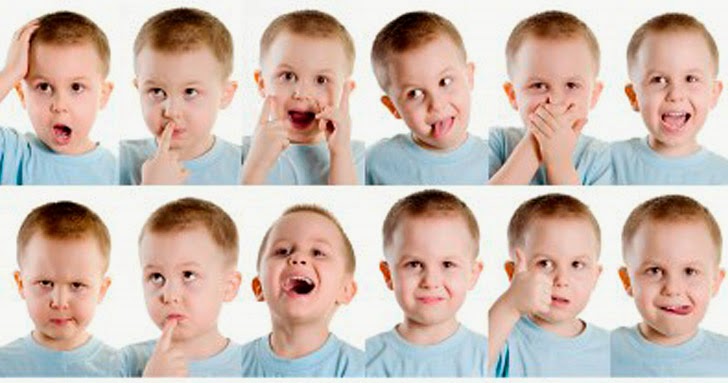 Every time indignation, anger or even anxiety boils, it is important to take a deep breath and exhale. This is the first step to managing emotions. When this practice becomes habitual, it will become much easier to control automatic reactions. Try to master the exercise yourself, and then show or tell your teenager about it.
Every time indignation, anger or even anxiety boils, it is important to take a deep breath and exhale. This is the first step to managing emotions. When this practice becomes habitual, it will become much easier to control automatic reactions. Try to master the exercise yourself, and then show or tell your teenager about it.
This material is part of a large project dedicated to the development of children’s personal potential and key competencies of the 21st century. What is the project about? We talk about the child and his development as a person, not an object of the educational process. We explain how the world is changing and show what skills will help a child live harmoniously in a changing reality. Other materials of the project cover the topics of development of social-emotional intelligence, financial and digital literacy, cognitive development, inclusion in school, etc. The project was prepared in collaboration with the website about education and upbringing of children Mel.
We explain how the world is changing and show what skills will help a child live harmoniously in a changing reality. Other materials of the project cover the topics of development of social-emotional intelligence, financial and digital literacy, cognitive development, inclusion in school, etc. The project was prepared in collaboration with the website about education and upbringing of children Mel.
author of the material
Inna Pribora
#development of personal potential
#social and emotional intelligence
#socio-emotional development
#universal competencies
#school
#MEL
Back
Scientists are still arguing about how people got emotions and why we need them. But they agree on one thing: there are several basic ones on which our life depends. We will talk about them today.
We will talk about them today.
Website editor
Tags:
Psychology
emotions
the senses
How to control emotions
Getty images
Emotions are an integral part of a person’s personality. Sometimes they can be complex and confusing. But in order to maintain peace of mind and mental health, it is necessary to learn to distinguish between them. Today we will talk about what basic human emotions exist, how to understand which one you are experiencing, and why you need to tell others about your feelings.
Scientists have been arguing about what emotions are for more than a century. Charles Darwin even wrote a book about them: the founder of the theory of evolution believed that emotions help both animals and people adapt to their environment. You are afraid of heights – and therefore you will behave carefully on the edge of a cliff. You have an aversion to dirt – and keep your home clean, reducing the risk of infections.
You are afraid of heights – and therefore you will behave carefully on the edge of a cliff. You have an aversion to dirt – and keep your home clean, reducing the risk of infections.
Darwin’s idea was picked up and developed by other scientists. One of them was the American psychologist Paul Ekman, who is now considered one of the leading researchers of emotions. It was Ekman who, after interviewing more than 100 scientists and taking into account their opinion, created a list of five basic human emotions. It included:
Keep in mind that this is just one of the classifications. For example, according to a 2017 study, there are 27 categories of emotions. But the concept of the five basics is an excellent framework for analyzing the complexity of all feelings. So what is each of the basic emotions?
Joy is an inner feeling of contentment, peace and happiness. It can appear when you:
It can appear when you:
Joy is not a short flash. In the course of research, it was found that it lasts longer than relief, tenderness, irritation, disgust, boredom, fear, surprise or shame. The average lifespan of this emotion is 26 minutes.
Do you often experience joy?
If you understand that joy is an elusive feeling for you, then think about whether any problems prevent it from appearing: stress, anxiety, or difficulty concentrating on what is happening to you here and now.
We feel sad from time to time. This emotion can be associated with a specific event – the breakup of a relationship, the illness or death of a loved one. But it also happens that it is very difficult to understand why you feel sad.
But it also happens that it is very difficult to understand why you feel sad.
Getting rid of sadness is difficult, but here are a few tips that will help you:
 This is easier said than done, but remember the people who care about you and talk to them. Surely there will be those who want to help you. If you realize that you have been feeling sad for a long time and sadness has a significant impact on daily life and interferes with work, study or relationships, contact a psychotherapist.
This is easier said than done, but remember the people who care about you and talk to them. Surely there will be those who want to help you. If you realize that you have been feeling sad for a long time and sadness has a significant impact on daily life and interferes with work, study or relationships, contact a psychotherapist. Fear arises when you feel some kind of threat. Depending on how severe it is, the fear can range from mild to severe. But keep in mind: although the danger may be imaginary, the fear does not become less real from this, and it cannot be neglected.
Here’s what will help you deal with fear:
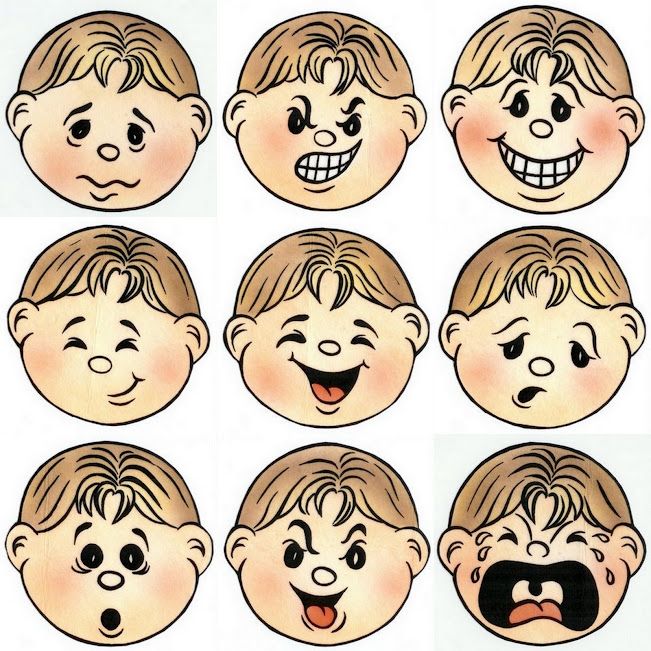
Don’t be discouraged if these recommendations seem overwhelming – they are not easy to follow on your own. Consider working with a therapist who can help you deal with panic attacks, phobias, anxiety, and other fear-related conditions.
Anger usually arises when you are faced with some kind of injustice and you feel that you cannot defend yourself. Many consider anger to be something negative, but it is a normal emotion that helps you understand when a situation becomes toxic.
Many consider anger to be something negative, but it is a normal emotion that helps you understand when a situation becomes toxic.
But sometimes anger can create problems for you and those around you. Here’s what will help you deal with it:
 Instead, take some time to cool down and then try to express your feelings calmly and respectfully.
Instead, take some time to cool down and then try to express your feelings calmly and respectfully. Everyone gets angry from time to time. But if you feel that you have problems with anger, a psychotherapist will help you find effective tools to deal with this emotion.
Usually you feel disgust when faced with some unpleasant situation. Like anger, this feeling helps protect you from what you want to avoid. But sometimes disgust must be overcome, and this is what you need to do:
 You usually feel uncomfortable when confronted with things that you fear or don’t understand. For example, many do not like to be around the sick. If in such situations you feel anxious, then offer help to a sick friend who is dear to you. But don’t harm yourself – first make sure you don’t get infected.
You usually feel uncomfortable when confronted with things that you fear or don’t understand. For example, many do not like to be around the sick. If in such situations you feel anxious, then offer help to a sick friend who is dear to you. But don’t harm yourself – first make sure you don’t get infected. 